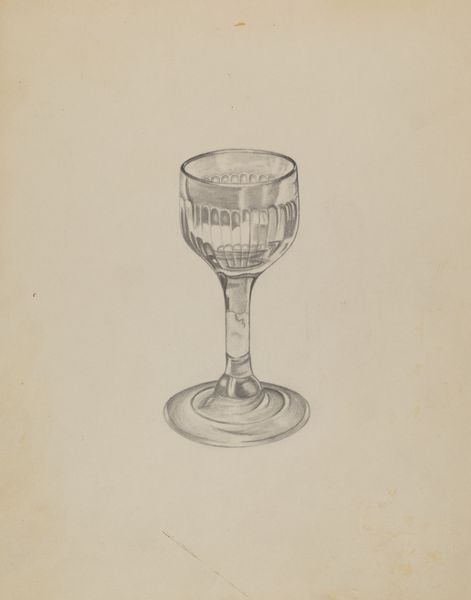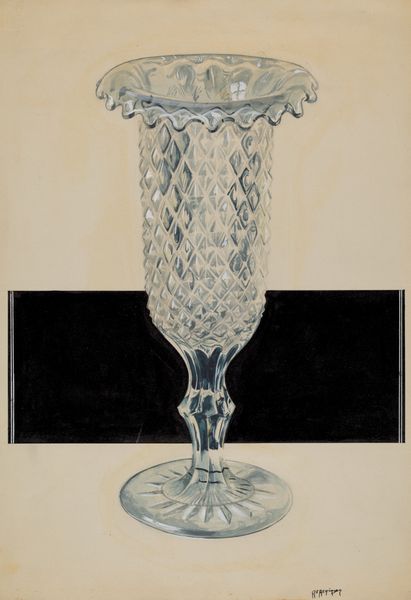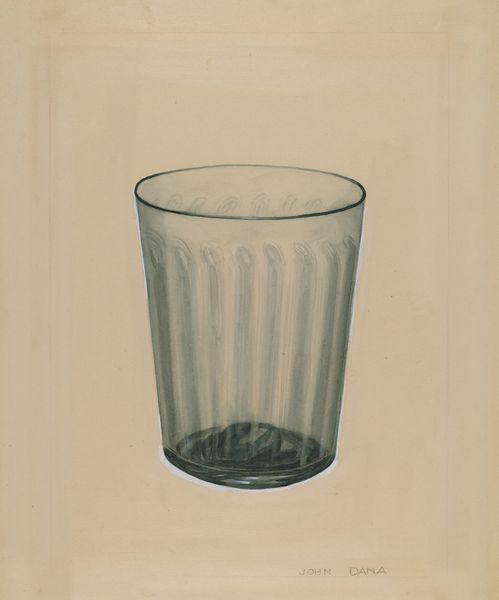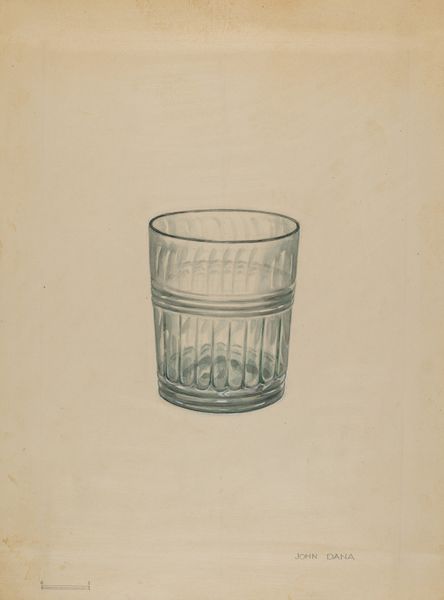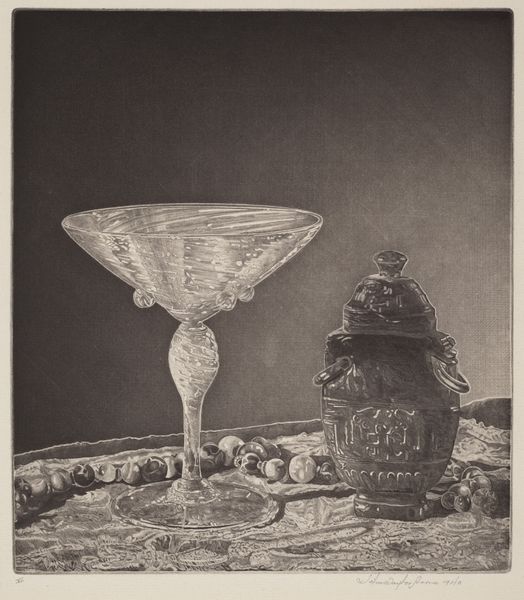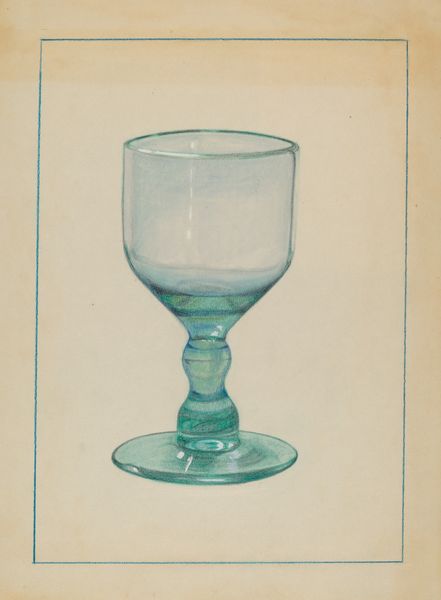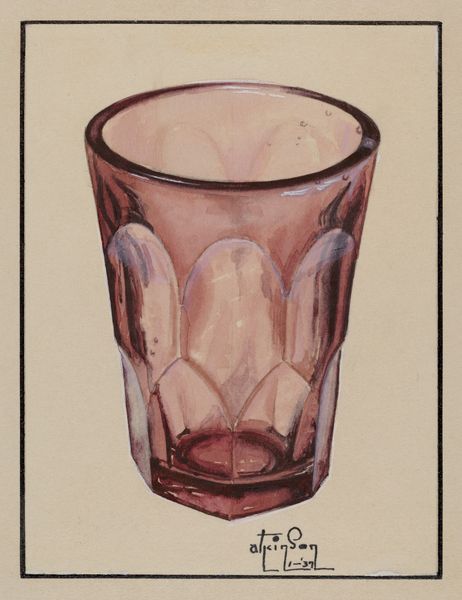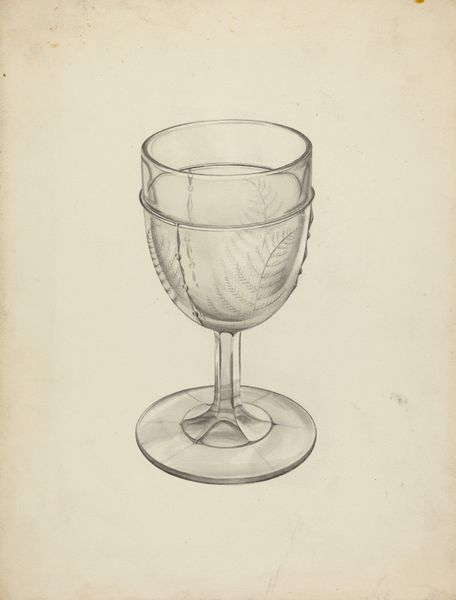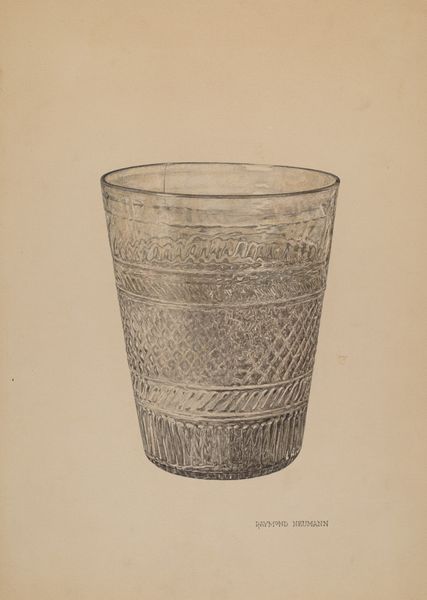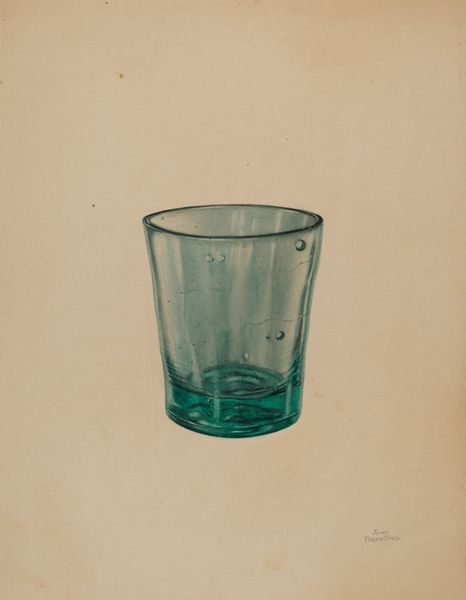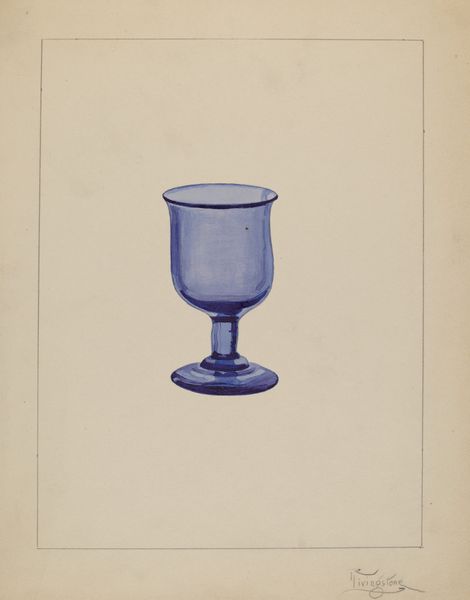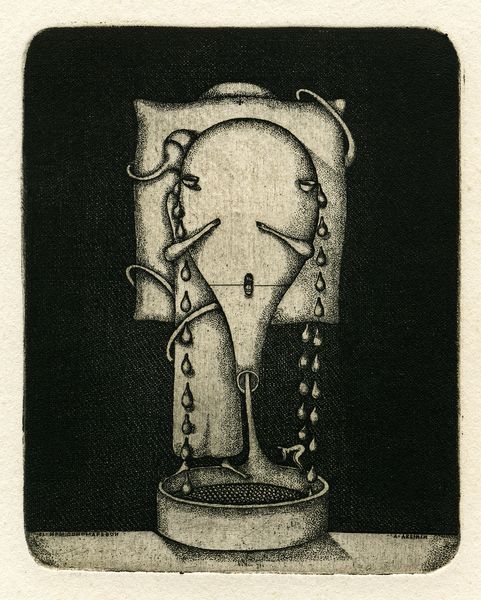
print, woodcut
# print
#
geometric
#
woodcut
Dimensions: sheet: 26.7 x 18.5 cm (10 1/2 x 7 5/16 in.)
Copyright: National Gallery of Art: CC0 1.0
Editor: This is M.C. Escher's "Still Life," created as a woodcut in 1917. It depicts two vessels: one tall and cylindrical, and a smaller stemmed glass beside it. The limited color palette gives it quite a stark, graphic feel, despite being a fairly traditional subject matter. What stands out to you? Curator: Given the socio-political context of 1917, at the height of World War One, this print is interesting for what it *doesn’t* depict. Many artists grappled directly with the war, either in support or protest. Escher’s choice of such an intimate, domestic scene almost feels like a deliberate turning away from public anxieties. What do you make of that decision? Editor: I hadn't considered it as a conscious decision to ignore the war! Maybe the geometric simplification of the forms is a similar kind of withdrawal into order and control, when the world outside was chaotic. Curator: Precisely. It also encourages us to consider the institutional role of art during wartime. Was art supposed to serve as propaganda, a distraction, or a critical reflection of society? Escher, at this stage in his career, seems to be experimenting with a more formal approach, perhaps influenced by the burgeoning avant-garde movements. But how effective is a "silent" art in such times? Editor: So the silence itself speaks, by making us question what art should be doing? That’s a compelling way to look at it. It shows how much context influences how we view even a seemingly simple still life. Curator: Indeed. The "Still Life," by its very existence during that historical period, becomes a statement—albeit an ambiguous one—on the function and purpose of art. We might question, does an artist have a responsibility to engage with conflict, or can retreat be another strategy for sense-making? Editor: This has completely transformed how I view this artwork. I will have to look into how Escher responded to that societal push and pull throughout his lifetime!
Comments
No comments
Be the first to comment and join the conversation on the ultimate creative platform.
